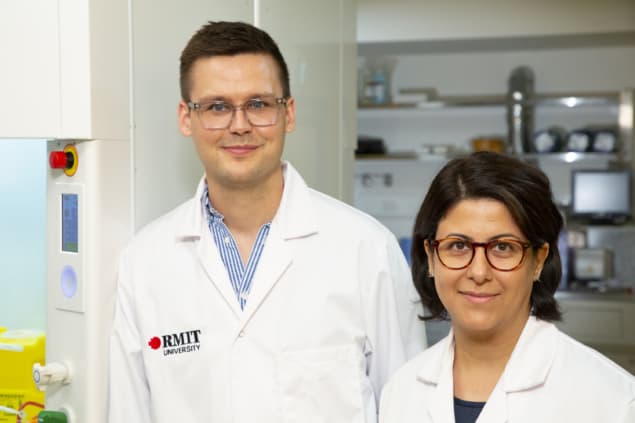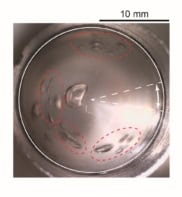Carbon dioxide (CO2) can be transformed back into carbon at a minimal energy cost thanks to a new catalyst reported by researchers at the University of New South Wales (UNSW) and the Royal Melbourne Institute of Technology (RMIT) in their recent Nature Communications article.
Carbon dioxide emitted by human activity is a critical factor in accelerating climate change, and must be addressed to reduce the resulting harmful impacts of rising sea levels and extreme weather. In an attempt to arrest emissions, carbon capture and storage projects have been initiated around the world that aim to trap CO2 at power plants and store it in deep geological formations, but there are concerns about the CO2 leaking back into the atmosphere. This new discovery by Torben Daeneke and Kourosh Kalantar-Zadeh transforms dissolved CO2 into solid carbon, which could be stored more easily or even used as an energy storage material.
Liquid benefits

Transforming waste CO2 into useful chemicals has long been a fixation for chemists. However, CO2 is a very stable molecule so most successful approaches have required high temperatures or pressures, or have been resource intensive in other ways, making them commercially impractical.
Kalantar-Zadeh and Daeneke have now developed a catalyst that electrochemically converts CO2 to solid carbon at room temperature using a technique that requires very little electrical energy. They use cerium nanoparticles in a mixture of metals called galistan, which is liquid at room temperature. The use of a liquid metal surface stops the carbon from building up and slowing the reaction, and means the carbon can be removed easily.

Panel calls for more research into carbon-capture technologies
The researchers show that the carbon generated by their process is as good as commercial carbon products for storing electricity. Although the electrocatalytic system is relatively complex and uses some costly metals it is an early demonstration of a very exciting prospect. Optimization might lead to viable carbon-negative processes that could produce useful materials and chemicals, with economically inviting resource requirements, while offering environmental benefits.



